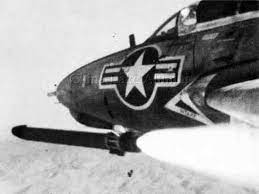AIM-95 Agile
Fact for 3/7/2021
FACTS
The Hughes AIM-95 Agile was an advanced short range air-to-air missile developed in the 1960s and 1970s for the US Navy. It was the most advanced weapon of its class yet developed, and it was meant to replace the AIM-9 Sidewinder, but it fared poorly in development and testing, and was ultimately canceled. The origins of the AIM-95 Agile are rooted in a mid-1960s study at the Naval Weapons Center (NWC), at China Lake in the Mojave Desert of California. This study investigated the performance of the AIM-9 Sidewinder in Southeast Asia, which had proven surprisingly worse in combat than expected. Each launch in which the Sidewinder had been fired and failed to hit it's target was investigated, and two common threads were found with most of the missed shots; either the missile had run out of fuel too soon to reach its target, or the enemy had maneuvered out of the missile's azimuth faster than the missile could steer to keep itself on-target




The effort to develop this new weapon was "Project Agile", and the resulting missile would end up bearing that name as well. To achieve the Navy's requirements, Project Agile called for a missile that had greater maneuverability, a shorter minimum range, and greater off-boresight capability than the Sidewinder. It was decided that the best combination of design attributes to achieve these ends were a more sensitive seeker mounted on a steerable gimble, an exceptionally powerful rocket motor for a missile in the intended size category, and steering via a thrust-vectoring nozzle rather than control surfaces.
The AIM-95 Agile had an unusual appearance, even by today's standards. Rather than large fore and aft fins used to maneuver it (as with the Sidewinder), the AIM-95 had only a tiny, almost vestigial set of folding fins at its base, which served only to provide aerodynamic stability. Its fuselage was exceptionally wide for a missile of its type, and yet it was also shorter than the Sidewinder. The forward fuselage tapered-down to a slightly elongated dome-like nose, composed of a highly transparent glass (or perhaps a similar material, such as silicium), leaving the seeker head highly visible as if on display. Internally, some three-quarters of the missile's length was entirely its engine --- hardly surprising, given that both a longer range and immense thrust were called-for in the same missile. The material composition of the AIM-95 is still largely classified
Arguably the most significant feature of the AIM-95 Agile is its guidance system. It featured an infrared seeker head with an "all-aspect" capability; meaning, it was sensitive enough to lock-onto an aircraft from any direction, even in a head-on attack. The azimuth of the Agile's seeker has not been reported, but its gimble allows it to steer up to 50 degrees off-boresight of the missile --- meaning, even if the targeted aircraft is able to maneuver 45 degrees off of the Agile's axis of flight, it will still have the target in sight and attempt to intercept it


The Agile's warhead was a High Explosive Fragmentation (HE-FRAG) munition, but nothing else about it has been published. Details concerning the size, weight, power, and fuse mechanism of this warhead still seem to be classified information. There is also no published information on whether or not any Agile prototypes were ever actually fitted with live warheads, nor if any were ever detonated in testing
Though while some of the AIM-95 Agile's features were far ahead of their time, others are unusual for air-to-air missiles even today. The most significant is that the Agile wasn't carried directly on a missile rail or pylon, but rather inside a hermetically-sealed launch tube, not unlike many anti-tank missiles.
This created more drag than if the Agile were mounted directly onto the aircraft, but also allowed the design to circumvent many issues with carrying an exposed missile externally (such as moisture and munition handling issues, that proved problematic on many US air-launched munitions during the Vietnam War).
source - http://www.military-today.com/
